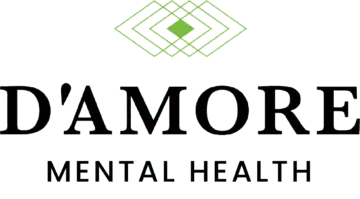When we talk about PTSD, we often think about physical trauma. This can be, for example, physical or sexual assault, wars or terrorist attacks, and accidents.
Nonetheless, this is only part of the story. Research, in fact, has shown that other factors can contribute to developing PTSD. The effects of emotional abuse, for instance, can result in a person suffering from this disorder.
If you would like to learn more about the relationship between emotional trauma and PTSD, then you’ve come to the right place. In this article, we will explain what PTSD is, what its main symptoms are, and how experiencing non-physical traumas can generate it.
Defining Post-Traumatic Stress Disorder
First of all, it’s important to clarify what PTSD is, and what its symptoms are. Post-traumatic stress disorder is an anxiety disorder that occurs after a person has experienced a distressing event.
The event, classified as “trauma”, then gives rise to a series of very distinctive symptoms, such as:
- intrusive thoughts. These are involuntary thoughts and feelings that can come and go very frequently and be extremely upsetting to the sufferer;
- difficulty concentrating. The sufferer often finds it difficult to focus on simple, daily tasks;
- trouble sleeping. This often happens in the form of insomnia, nightmares, and night terrors;
- panic and anxiety attacks. People suffering from PTSD very often experience moments of extreme physical and mental distress;
- flashbacks. Memories, feelings, and images from the traumatic events keep resurfacing, causing huge upset;
- feelings of isolation and guilt. The person might feel like they’re alone in experiencing those feelings, and that nobody can understand them. Sometimes they might believe that they are responsible for causing the trauma itself.
The Most Common Causes of PTSD
As we mentioned in the beginning, the most known causes of PTSD are those of a physical nature. Very distressing, traumatic events that have physically hurt or injured a person can lead to PTSD.
This happens even more frequently if the person experiencing the traumatic event feared for their life. PTSD-associated physical trauma, in fact, is linked to the belief that a person is about to die. This can sometimes be true, like for war veterans or victims of serious accidents.
However, even when a person’s life was not necessarily in danger, the very idea of being about to die can result in PTSD symptoms. The most common physical causes of PTSD, then, are:
- fighting in a war
- being involved in a road accident
- being sexually or physically abused
- having serious health problems
- experiencing traumatic childbirths and stillbirths
How About Emotional and Psychological Causes?
While physical causes tend to be those that people think about when talking about PTSD, it’s vital to bring emotional ones into the equation. People who have experienced psychological trauma are at high risk of developing PTSD.
Emotional and psychological traumas can include any of the following:
- relationship abuse
- family abuse
- the sudden death of a loved one
- involvement in a distressing event without experiencing any physical harm
Let’s try and dig a bit deeper into each of these. PTSD from a relationship can happen when a person is constantly attacked, belittled, mocked, or humiliated verbally by their partner. This, of course, can occur in a family setting as well: if a child is repeatedly abused verbally by a close family member, they can develop PTSD in the future.
The unexpected death of a loved one can also generate PTSD symptoms. This can be anything from the sudden, violent death of a close relative, to the death of a baby during or soon after pregnancy.
In terms of being involved in an upsetting event without being physically hurt, it can be helpful to think about frontline healthcare workers during the coronavirus pandemic. These people, while not suffering from COVID-19 symptoms, witnessed highly distressing situations on a daily basis for months. As a result, many of them have started experiencing PTSD.
All of these situations can be perceived by a person as very traumatic, and impact the nervous system just like a physically violent event would do. As a consequence, the person can begin to display symptoms of PTSD. It’s important to mention, also, that these symptoms may occur soon after the trauma, as well as many years later.
How to Treat PTSD Caused by Emotional Trauma
PTSD should not be left untreated, as it can lead the sufferer to develop chronic and debilitating symptoms. To treat PTSD, it is vital to work through the emotional trauma experienced by the sufferer and provide them with the tools and skills to better cope, with their symptoms.
Types of effective treatment for PTSD caused by emotional trauma include psychotherapy, CBT, and EMDR. A combination of the three can also be helpful. The most crucial aspect, in any case, is that the person follows a personalized treatment path that takes into account their own individual circumstances and symptoms.
Recognizing PTSD as One of the Effects of Emotional Abuse
As we have demonstrated, the effects of emotional abuse can be very profound, potentially resulting in a person suffering from post-traumatic stress disorder.
It is fundamental to acknowledge that emotional and psychological trauma can be among the causes of PTSD, alongside the most common physical ones. By doing so, people experiencing this disorder can find effective support and treatment in order to recover.
If you or a loved one is affected by PTSD, do not hesitate to contact us. D’Amore Mental Health offers specialized treatment for this disorder. To find out more, visit our website and get in touch with us today.





































